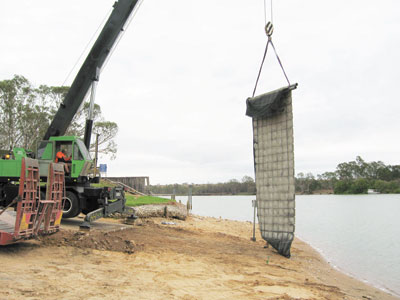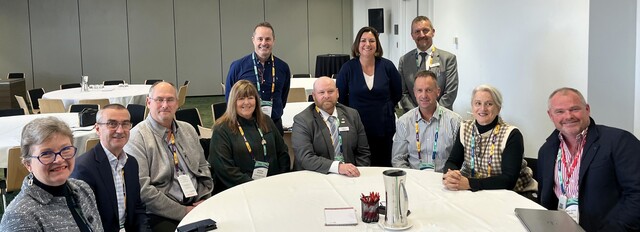South Australia’s Mid Murray Council has come up with an inventive way of adapting its boat ramps to enable their continued use in these times of low river levels.
Located an hour’s drive east of Adelaide and comprising land in the Murraylands, Riverland and Mount Lofty Ranges regions, Mid Murray Council is home to 220 kilometres of the Murray River.
In February, Council recognised that with the river level already dwindling, and Easter not far away, something had to be done to prevent losing a significant amount of tourism during one of its busiest periods.
“The level of the River Murray is continuing to drop, which is causing problems for people launching or retrieving boats,” said Council’s Acting Works Manager, Andrew Strauss.
“In February, river levels were already at -0.7 metres and just before Easter they had fallen to about -1 metre. So if the ramps were left as they were, only three of the 20 in our Council area would have been operable.”
Andrew Strauss said that in most cases the existing concrete ramp was completely out of the water.
“In some instances Council was able to put some hard surface down between the concrete and the water, however with the river continually dropping and a wind variation, it is not unusual for the level to change 300 millimetres in a day,” he said.
“A vertical drop of 300 millimetres will expose up to 2.5 metres in length of the river bed, which has not been treated. This is usually very soft.
“A large dropoff could also exist less than a few metres away, which may cause some vehicles to become bogged at the ramps.”
Andrew Strauss said Council did not want to close the ramps as people with four wheel drives with dinghies and tilt trailers could still use them.
After investigating many options, most of which were too expensive, Council’s Works Department came across an Australian innovation – a concrete mattress that could adapt ineffective ramps to facilities that would suit most users.
“To upgrade the 17 inoperable ramps to suit the predicted lower river levels, the cost was estimated to be in the vicinity of $1.5 million,” Andrew Strauss said. “But the 11 new concrete mattresses were installed at less than a 30th of the price of the alternative upgrading method.”
The concrete mattresses are layed at the end of the existing boat ramp to extend it further into the water, thus allowing vehicles to back further into the water without getting bogged.
While standard vehicles can use the adapted ramps, Council is advising that they only be used by four wheel drives, as some remain steeper than others.
Andrew Strauss said that Council will assess the ramps as the water level drops, but is extremely happy with the short term maintenance solution, which has enabled tourists and locals to continue using the river during a busy time.
“Our ratepayers have been exceptionally happy with the result, and business owners were pleased to maintain their business over Easter,” he said.
For further information contact Andrew Strauss on (08) 8569 0100.








